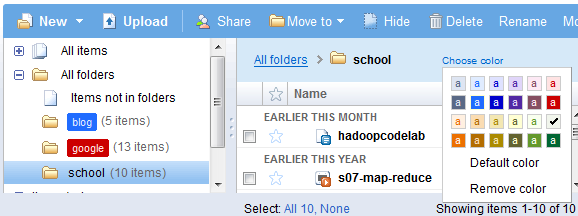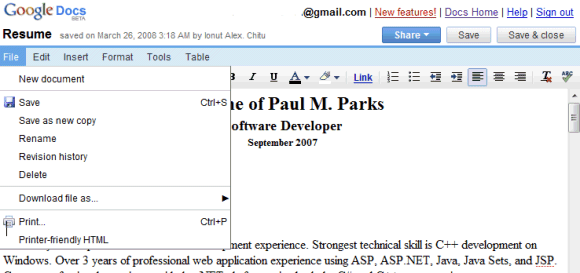1. Google Japan added a special Universal Search result for Dajare, "a kind of comic Japanese wordplay, similar in spirit to an English pun relying on similarities in the pronunciation of words to create a simple joke".

2. Google China's blog describes a social search engine that would replace Google's algorithms. "We sort of search results purely from a human decision, [without] machine's intervention."

3. Google Australia announces gDay, a new feature of Google that lets you search today the web pages published tomorrow. "Google spiders crawl publicly available web information and our index of historic, cached web content. Using a mashup of numerous factors such as recurrence plots, fuzzy measure analysis, online betting odds and the weather forecast from the iGoogle weather gadget, we can create a sophisticated model of what the internet will look like 24 hours from now. We can use this technique to predict almost anything on the web – tomorrow's share price movements, sports results or news events. Plus, using language regression analysis, Google can even predict the actual wording of blogs and newspaper columns, 24 hours before they're written!"

4. Google Korea found a new technology for translating dialects that was integrated in Gmail and Google Talk.
But Google's US teams didn't lose their humor.
5. Google's main blog announces Virgle. "Virgin founder Richard Branson and Google co-founders Larry Page and Sergey Brin will be leading hundreds of users on one of the grandest adventures in human history: Project Virgle, the first permanent human colony on Mars."
6. Google Docs has a new option: create a new airplane. For now, the only model available is the one below:

7. If Google Australia lets you see the future, Gmail gives you the option to change the past with Gmail Custom Time. "Just click Set custom time from the Compose view. Any email you send to the past appears in the proper chronological order in your recipient's inbox."

8. YouTube tries to rickroll everyone by linking all the featured videos from the homepage to Rick Astley's (in)famous song "Never Gonna Give You Up".
9. Google Book Search has a new feature: capturing a book's smell. "I'm pleased to let you know that we've made some headway with one type of volume we've struggled with in the past: books employing scratch-and-sniff technology. Using special equipment and tricky JavaScript, we're now able to capture some of the smells during the scanning process and then embed them in your web browser when you preview these titles in Google Book Search."

10. Google Calendar launches a wake up kit. "The wake up notification uses several progressively more annoying alerts to wake you up. First it will send an SMS message to your phone. If that fails, more coercive means will be used. The kit includes an industrial-sized bucket and is designed to be connected to your water main for automatic filling. In addition, a bed-flipping device is included for forceful removal from your sleeping quarters."
11. There's also a new "I'm Feeling Lucky" button that lets you automatically add events like "Date with Eric Cartman".

13. Google Talk goes green by launching a bot that translates conversations into the IM lingo. "In honor of Earth Day (3 weeks from today: April 22, 2008), on that day our Google Talk servers will start automatically sending your conversations using IM-speak instead of normal words. We know you'll all want to practice your IM-speak, so we're helping by introducing a new translation bot, en2im@bot.talk.google.com, which will translate your conversations into IM-speak, to help you get used to the new lingo." LOL!

14. orkut makes fun of its strange name and replaces it with "yogurt". In 2006, Loren Baker posted 10 reasons why Brazilians love orkut. Among them, "Orkut sounds like Yakult or iogurte (yogurt). Yakult is the Brazilian version of the popular Japanese Yakult yogurt drink. Everyone drinks it in Brazil when they're kids."

15. Blogger announces Google Weblogs, a service that lets you post content directly in Google's results. "We'll automatically extract the most relevant sentence from your post for the index page, along with any necessary ellipsis. We'll also put some words in bold!"

16. AdSense launched contextual ads for conversations. "You can begin displaying ads that are relevant to the topics you're discussing -- in an unobtrusive screen above your head. Anyone taking part in the conversation can hit the ad with their hand to immediately take advantage of the product or service being offered. With our new Teleportation Technology(TM), you'll be transported directly to the site where the service is available, or have the product appear instantaneously in your hands."
17. AdWords introduced FrankRank, a new way to rank ads. "AdWords rankings are now based on how well a particular ad goes with mashed potatoes and gravy... and quite frankly, how much I like the ad. Some people thought this connection between mashed potatoes and bids was confusing, but since it's really all about what I like, I figured we'd just name it after me," explained Frank the turkey, the new official mascot of Google AdWords.
18. Hopefully, there's no #18.
If I were to choose the best April Fools' Day 2008 hoax from Google, I'd go with Google Australia's gDay. I had a similar idea for this year: monitoring how web pages evolve and predicting how they look in the future, but I decided not to use it.
{ Thanks to everyone who sent tips. }























 Yahoo seems to be all about openness lately (
Yahoo seems to be all about openness lately (







